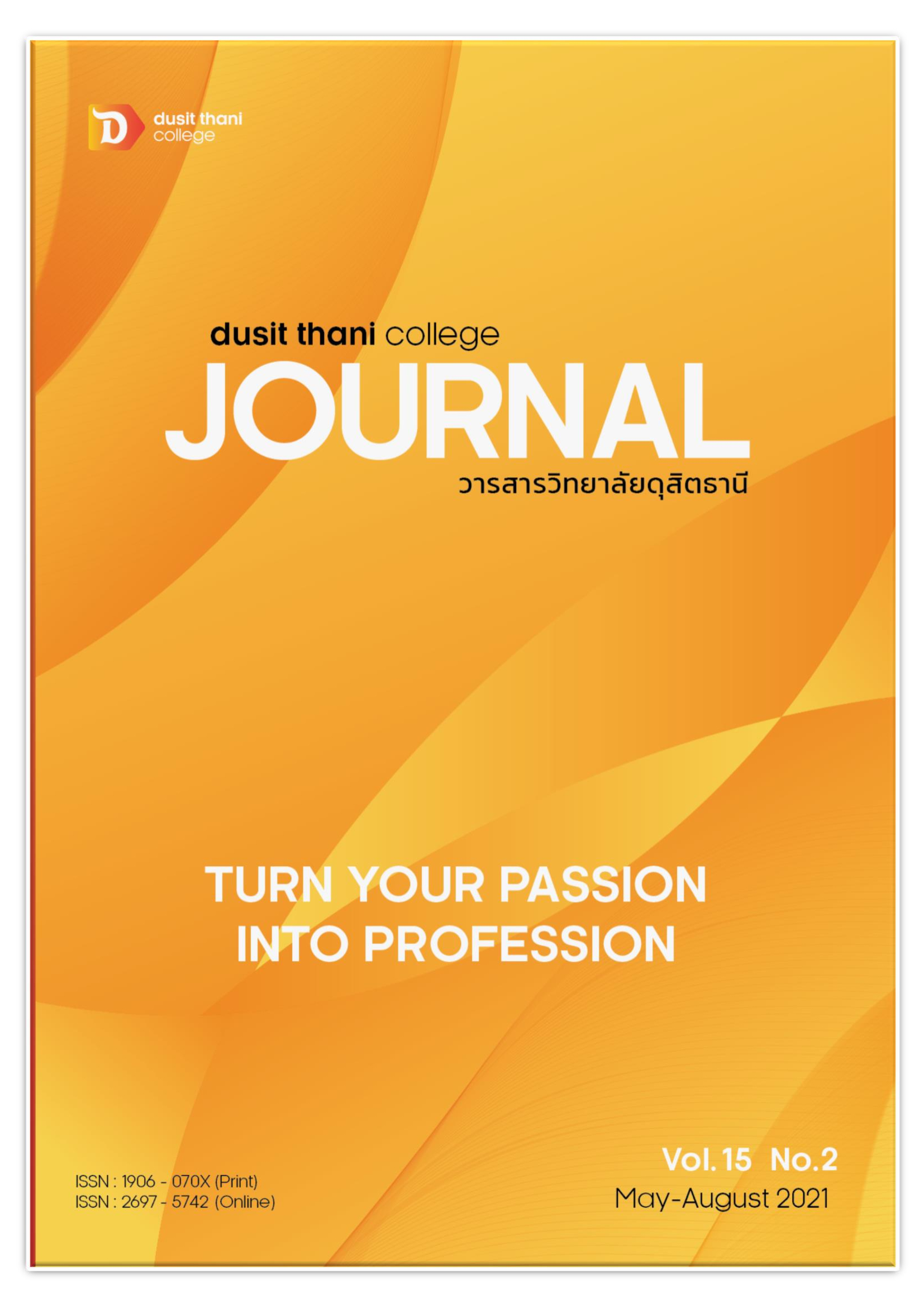GUIDELINES FOR POTENTIAL BUILDING TOURIST DESTINATION IN SUANPUNG RATCHABURI
Main Article Content
Abstract
This research aims to study the potential Building Tourist Destination in Suanphueng Ratchaburi. It’s a mixed method research include area frame survey and survey data from 400 tourists by using the opinion questionnaire as a research tool. The research results were found that The development approach should start from 3 things that must go together: economic aspects. Tourists were concerned with community participation and community support at the highest level. For the decision to travel in the Suan Phueng district Tourists decide to travel in Suan Phueng District because it will get fresh air. And there are activities, events such as cycling events, running events and concerts, etc. The results of the study showed that the capacity building and development of tourism areas to be a livable city. To the city to visit There should be a guideline for operations in 4 parts: management of tourist attractions. Management of hotels and accommodation Community participation and community support and events in the Suan Phueng tourism area.
Article Details
Article Screening Policy
- All research and academic articles to be published must be considered and screened by three peer reviews in the relevant field / article.
- All articles, texts, illustrations and tables published in the journal are the personal opinions of the authors. Editors don't always have to agree. And no responsibility whatsoever is the sole responsibility of the author.
- The articles to be published must never be published. Where did you first publish? And not in the consideration of other journals If the audit found that there has been a duplicate publication It is the sole responsibility of the author.
- Any article that the reader sees as being plagiarized or impersonated without reference. Or mislead the work of the author Please let the journal editor know it will be your greatest blessing.
References
Nakhon Pathom: Institute for Population and Social Research Mahidol University.
Chaianukul, Phornprapha. (2014). Quality of Service of Tourist Attractions Affecting Satisfaction of Thai Tourists in Suan Phueng District. Ratchaburi Province. Rajamangala University of Technology Thanyaburi.
Kamket, Wannee. (2008). Behavioral Science Research Method. 2nd edition, Bangkok: Chulalongkorn University Press.
Kan Na, Sabaithong. (2013). Environmental Impact from Changes in Tourist Land Use,
Suan Phueng District, Ratchaburi Province. Master of Science (Environmental Management) Faculty of Social and Environmental Development. National Institute of Development Administration.
Khumthanom, Naphatsorn. and Piangprasert, Nittaya. (2015). Needs of Thai tourists towards ecotourism in Suan Phueng District. Ratchaburi Province. Chiang Mai: Graduate School Chiang Mai University.
Lincoln, Y., & Guba, E. G. (1985). Naturalistic inquiry. Newbury Park, CA: Sage.
Phasunon, Prasopchai. (2010). BUSINESS STATISTICS. Bangkok: Top Publishing Company Limited.
Phongsabut, Paitoon. (2007). Impact of the tourism industry on Thailand. Thai Encyclopedia for Youth Volume 27.
Prachanan, Pisamai. et al. (2007). Consumer behavior of tourism products of tourists. Southern Isan Province Buriram Rajabhat University: Buriram.
Sangren, Suzie. (2014). A simple solution to nagging questions about survey, sample size and validity. Quirk Marketing Research Media, (January 1999). Retrieved from http://www.quirks.com/ articles/a1999/19990101.aspx.
Suansri, Potchana. (2003). Guide to Tourism Management. By the community in Bangkok : Travel for life and nature project.
Tourism Authority of Thailand. (2013). TAT Tourism Journal 3/2013. TAT Tourism Journal. Bangkok.
Virakul, Kanokkarn. et.al. (2013). Route of Gastronomic Tourism. National Research Council of Thailand. And The Thailand Research Fund.
Vanichbuncha, Kanlaya. (2005). Statistics for research work. Department of Statistics, Faculty of Commerce and Accountancy Chulalongkorn University.
Wong Tubtim, Udon. (2002). Community and the Management of Ecological and Cultural Tourism in Maehee Subdistrict, Pai District, Maehongson Province. Thailand Science Research and Innovation (TSRI).


